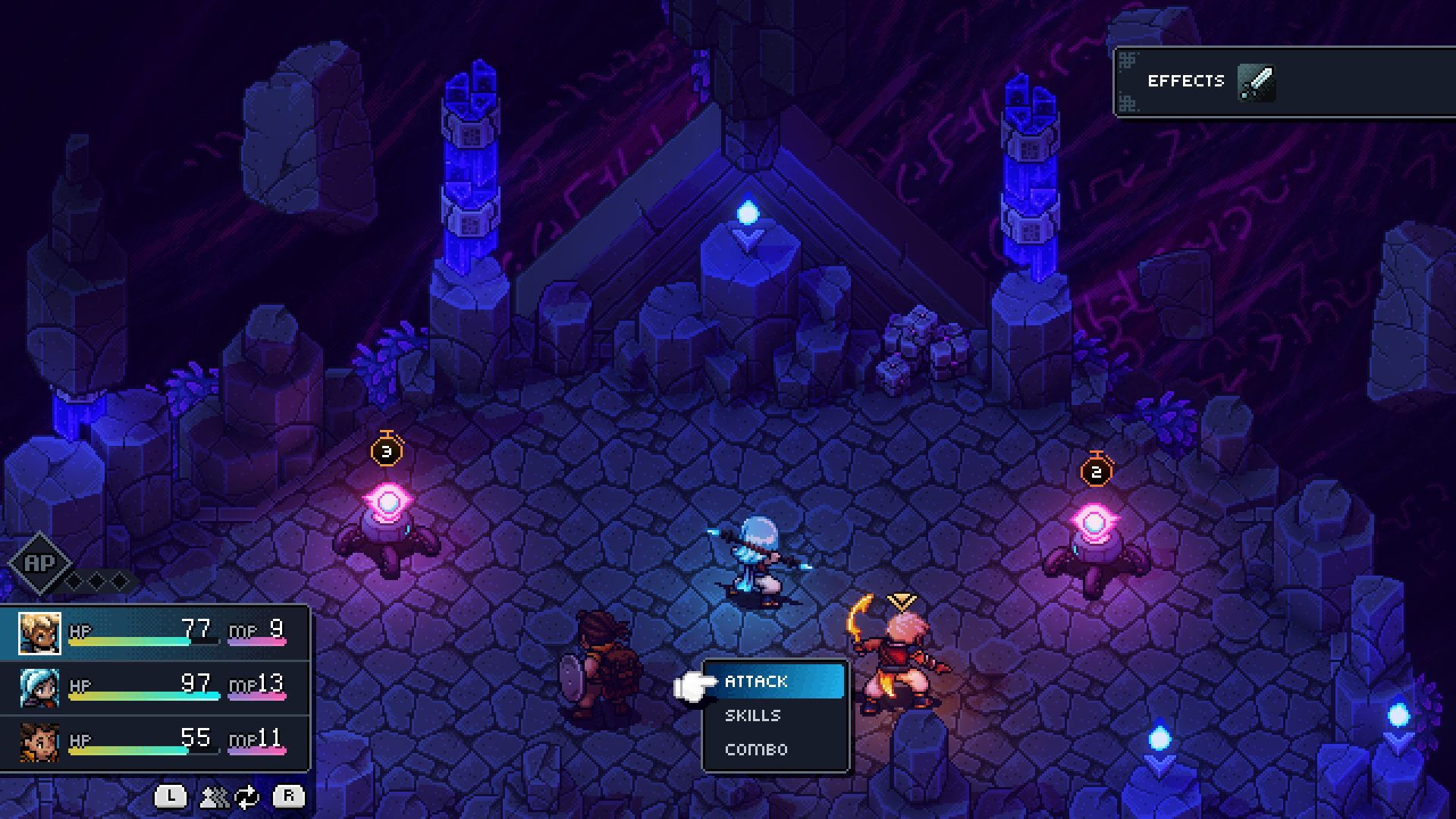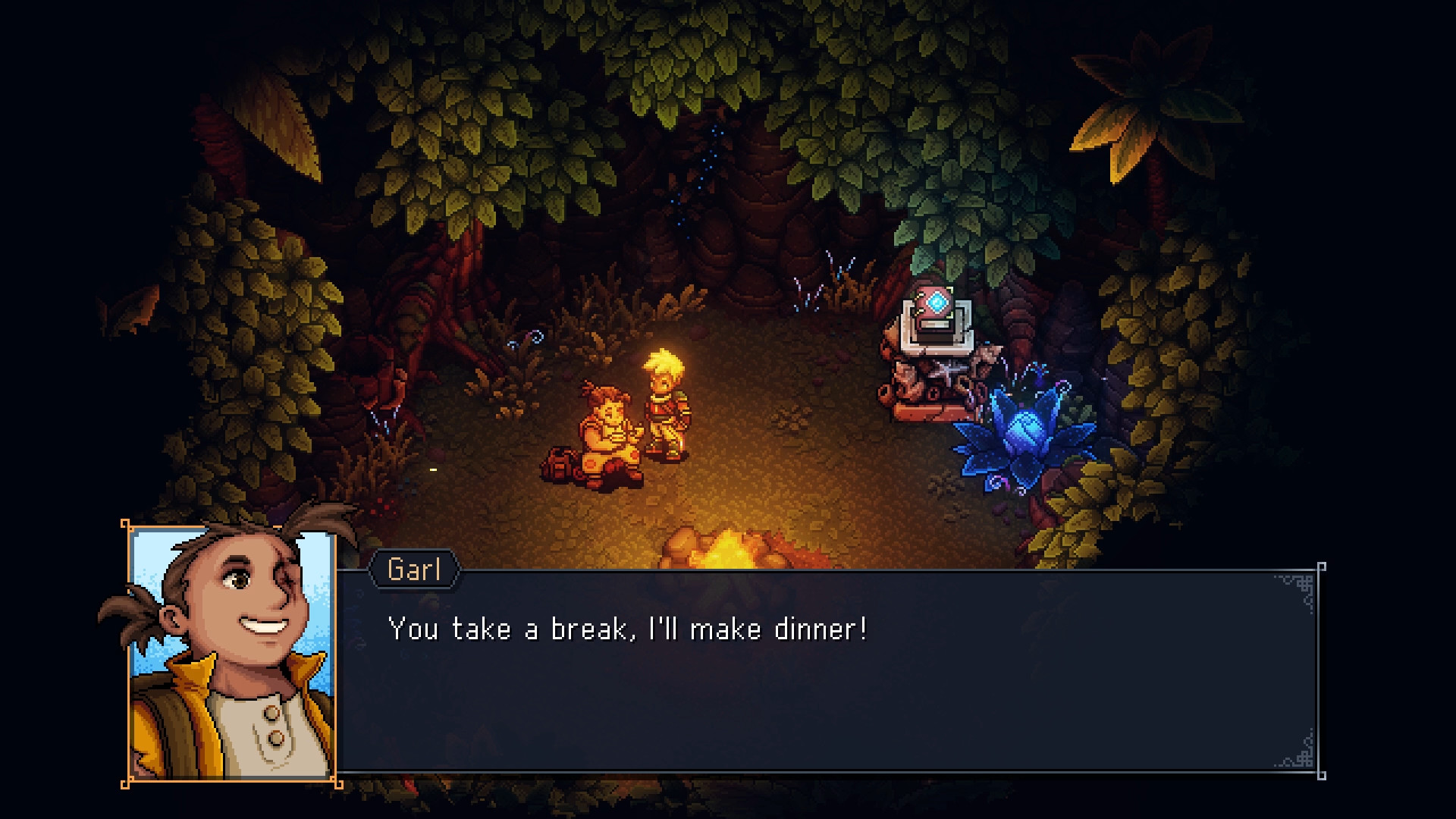Canadian-made Sea of Stars looks like the modern JRPG of my dreams
In 2018, Quebec City-based indie developer Sabotage Studio put out The Messenger, a Ninja Gaiden-inspired action-platformer. The game garnered significant praise and even won “Best Debut Indie Game” at the 2018 The Game Awards.
Now, Sabotage is trying its hand at Japanese role-playing games (JRPG) with Sea of Stars, a prequel to The Messenger that’s set to release later this year. It’s a genre I adore, with Square Enix’s Final Fantasy, in particular, being my all-time favourite series. That’s especially appropriate considering how much Sea of Stars draws from Square Enix’s other opus, Chrono Trigger, to which many key Final Fantasy developers contributed.
Thankfully, based on a recent hands-off group preview I attended, Sea of Stars is shaping up to be pretty much everything I could have wanted.
“We started a project of doing our dream game, which was to do a turn-based RPG, which is something we couldn’t afford either money or clout-wise as a startup,” explains Sabotage president and creative director Thierry Boulanger of Sabotage’s shift from The Messenger to Sea of Stars. He adds that Sea of Stars is “about four times the scope” of The Messenger and is being made by a team of 25 people, up from the seven who worked on its predecessor.
With that intro out of the way, Boulanger begins the demo, which picks up at some point later in the campaign in which our heroes, Valere and Zale, are resting in the port town of Brisk. As the Children of the Solstice, they have the unique ability to perform Eclipse Magic, which is needed to save the world from The Fleshmancer’s monstrous creations. At this part in the story, the party needs to secure passage to an island, forcing them to take seek out a magic coin from a nearby dungeon for a band of pirates.
Before Boulanger even talks to the pirate leader, though, I’m immediately taken aback by Sea of Stars’ beauty. The game features a gorgeous 2D pixel art graphical style that looks like a more detailed HD version of Chrono Trigger. Adding to the stunning aesthetic is a day-and-night cycle, which, in a neat twist, you can actually control at will. Boulanger says this mechanic will be implemented in some puzzles, but for the most part, it’s just a welcome way to let you set the atmosphere and listen to nighttime variations of songs.
And on the subject of music, Yasunori Mitsuda, the lead composer of Chrono Trigger, has produced around 10 new tracks for Sea of Stars. The actual story of how Mitsuda came on board is, by Boulanger’s own admission, “kind of boring;” as he tells it, “there was just a polite email, and we heard back and it was like, ‘yeah, that actually looks pretty good, I’d like to make some music for you guys.” Nonetheless, having such talent attached undoubtedly adds to the authenticity.
But it’s Sea of Stars’ gameplay and overall structure and pacing that are most impressive to me. Upon exiting Brisk, Boulanger brings us to the world map, which is certainly Chrono Trigger-esque in both scope and layout. In the day and age of blisteringly huge games, it’s refreshing to have more scaled-back settings like this. That strong art direction also carries over to the open-world, with the island that Boulanger comes out on housing both a towering mountain and equally massive snake that’s wrapped around it. It’s striking imagery, to be sure, and it gets me excited for the seemingly inevitable encounter with the hulking reptile.
For now, though, Boulanger enters the dungeon, a dimly lit, moody cavern which looks lovingly plucked from an SNES RPG. To progress, you have to explore the rooms to locate crystals that can be placed in prisms to unlock doors. As he sets about to do this, Boulanger showcases one of Sea of Stars’ most welcome features — no random encounters. As with Chrono Trigger, enemies are visible in the field and can be avoided accordingly.
no random encounters#pixelart #screenshotsaturday #gaming #rpg pic.twitter.com/zX0Kalwvdg
— Sea of Stars (@seaofstarsgame) February 19, 2022
“Combat is meant to be kept light and more focused on skill and synergies you can come up with, rather than grinding out big bars,” Boulanger says.
Notably, Sea of Stars is fully turn-based, rather than “Active Time Battle” focused like Chrono Trigger, but everything else is certainly inspired by the iconic Square RPG. For example, party members can spend ‘Combo Points’ accrued by regular attacks and spells to perform team-up moves not unlike Chrono Trigger’s ‘Tech’ attacks. This can include a boomerang-like blast that ping-pongs between enemies for a wider damage spread.
A nice little added wrinkle, though, is that your third party member (in the demo, it’s a “warrior-cook” named Garl) is, according to Boulanger, all about “displacement.” At one point, Boulanger commands Garl to pick up an enemy to the far-right of the screen and bodyslam it closer to the other creatures. This teed them up for Valere and Zale to use an area-of-effect ability to hit them all at once. “The idea for combat was that they’d each get different utility — it’s not only about dealing damage, but it’s also about the damage type you need to break a casting spell, is it a multi-hit, AoE [area of effect], is that single target, high damage, Sun or Moon [elemental damage]…”
My favourite aspect of combat, though, is Sabotage’s clever spin on elemental weaknesses. When an enemy is preparing a more powerful attack, such as a deadly spell, a series of locks will be displayed over them. Hit this enemy with the appropriate elemental move and you’ll break one of the locks, thus reducing the attack’s damage potential. Successfully shattering all locks will result in the move being cancelled entirely. The game also features a turn indicator so you’ll know when both your party and the enemy can act, which encourages you to plan out your moves in order to break as many locks as possible. In some classic JRPGs, you’d have to just use a ‘Defend’ ability to prepare for an enemy’s incoming supermove, which could feel rather rote. Therefore, I love that Sea of Stars lets you take a more active and strategic route to circumvent damage. To help with all of that, you can also time your button presses to do more damage upon striking the enemy and, conversely, reduce incurred HP loss when you yourself are hit.

As a whole, I also appreciated the pacing of the dungeon. Enemy placement felt balanced and the overall size of the area wasn’t massive — common problems in older JRPGs which could lead to bloat and feelings of frustration. In fact, Boulanger stressed that a key design principle was to avoid giving the player these sorts of headaches.
“The biggest Chrono Trigger takeaway for me was how tight it was — you’re always clear on what you’re supposed to do and what you’re supposed to do next,” says Boulanger when asked about the game’s size.
Indeed, Chrono Trigger’s main story was around 20 to 25 hours, with a couple of dozen extra hours added if you wanted to do everything, including sidequests and unlocking alternate endings. With this structure, the game never feels tedious or overlong, and Sea of Stars is shaping up to be similar.
“[Sea of Stars is] very much distilled in that way, so dungeons are kept shorter, the next beat is always clear, and then it just keeps on progressing.” Boulanger adds that roughly 25 percent of the game is optional content, such as fishing and sailing, so you’ll still have more to do if you desire.

Additionally, in certain parts of dungeons and on the world map, you can start campfires where you can save and heal the party. For dungeons, specifically, these look to be a brilliant way to better pace exploration. In some JRPGs, you might get tired after a while of running a bit, fighting an enemy, and rinse and repeat. At these campfires, though, you can relax and speak to your party to get some banter, uncover some skits or backstories or even get a tip on where to go next. That last point is particularly smart as Boulanger notes it’s a way for players who maybe took a prolonged break from Sea of Stars to get caught up to speed. After all, how often have you picked up a game after a while and forgotten what was going on? I know I have.
However, he also notes that the team wants to ensure that players don’t ever have to grind.
“There’s a rubber band on XP, basically, where you’re really meant to flow along with the story. It’s a distilled experience — you’re never going to be grinding in this game. If you’re stuck on the boss, what that means is you need to look at the patterns and block better next time or break the locks better by being smarter with how you use your special moves, and combining them and all that.”
There are also items you can equip that allow a sense of difficulty scaling.

“So instead of choosing ‘Easy,’ ‘Medium’ or ‘Hard,’ it’s like what you equip is either going to make combat swifter, but only if you can pull it off, versus [items] more about flowing along with the story, and you get more and more leeway with your mistakes,” he says. An example of the former is the Amulet of Onboarding, which increases HP by 70 percent and refills your health by half after battles. On the flip side, the Gambler’s Earring gouges your HP by 70 percent but offers a 2x bonus to timed parries to challenge you just a bit more.
The only element of Sea of Stars that I couldn’t really get a good bearing on from the demo is the stortelling, which is, of course, a critical part of Square JRPGs. That said, I’m optimistic it’ll turn out well, given the surprisingly strong writing in The Messenger. It’s also reassuring to hear Boulanger say that it was “paramount” that anyone can fully enjoy Sea of Stars without having played The Messenger, outside of the “odd wink” of fan service.
After attending this demo, I’ve come away even more excited for Sea of Stars. Everything Boulanger touched on, from the visuals and music to the strategic combat and trimming the fat of the RPGs of yore, is really speaking to me so far. I’m hopeful the final product will more than deliver on all of this promise.
Sea of Stars is set to release holiday 2022 on Nintendo Switch and PC, with other platform announcements set to come in the spring.
Image credit: Sabotage
For all the latest Technology News Click Here
For the latest news and updates, follow us on Google News.
